Darn it! I'm sick and tired of being a scarecrow! Charles Atlas says he can give me a real body. All right! I'll gamble a stamp and get his free book!
-Countless Magazine and Comic Book Ads
Last weekend, Abbie over at ERV proclaimed herself the fittest person on Scienceblogs, and one of my readers thought I might have something to say about that. I sure do; I'm going to tell you what -- as a complete and total amateur -- fitness means to me.
Fitness, for me, is about meeting your goals for your body and your life. What does that mean for you? Do you want to be able to run a marathon (or a mile, for that matter)? Lose weight? Gain muscle mass? Jump higher? These goals are very different from one another. The very fit man who can do this:

is probably not also going to be able to do this:
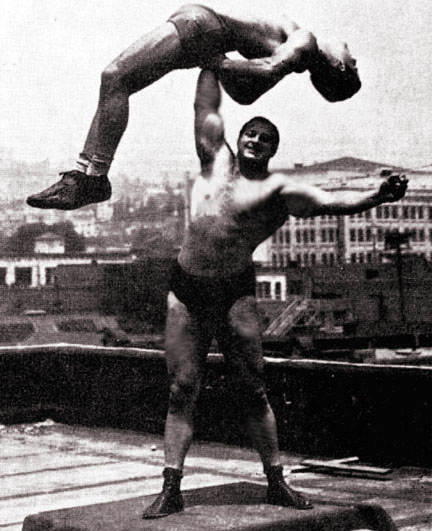
(And I can do neither.) But I am in pretty good shape for what I am, and so I'd like to share with you some very basic things that I wish I knew about diet and exercise when I was younger. Why?
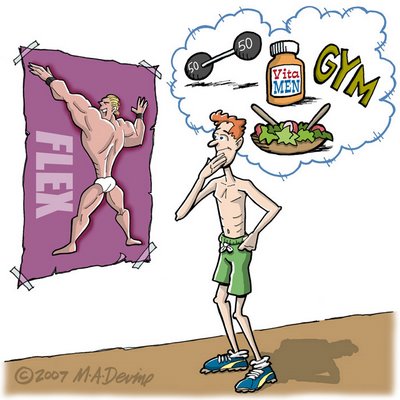
I had always been pretty thin, but when I was seventeen, I got very sick and lost a lot of weight. By time the illness was over, I weighed an extremely slight 128 pounds, despite being my full-grown height of 5'9" (176 cm). I didn't like not feeling strong, sure, but more than that, I didn't like how limited I felt in my body. If I knew what I know now, what would I tell that kid?
Some simple exercises a few times a week and some small changes in your eating habits can really help you build muscle. If I were starting to lift weights at a gym for the first time, here are the basics of what I would want to know, in the language I learned it. (Probably not correct physiological terminology, but you can always check an anatomical chart.)

1.) If you want to build muscles, you need to exercise the muscle groups you want to build. For your upper body, that means your chest (pecs), your back (lats and traps), shoulders/neck, triceps, biceps, and core (abs). For your lower body, that means your butt (glutes), your thighs (quads/hamstrings), and your calves. There are a whole host of free-weight and machine exercises, as well as some body-weight (i.e., equipment-free) exercises that are easily google-able for each muscle group. Whatever it is you're going to do, warm-up first! This could be as simple as five minutes of walking briskly on a treadmill. Getting your blood flowing and your muscles warm is a great idea before doing any weight-lifting.
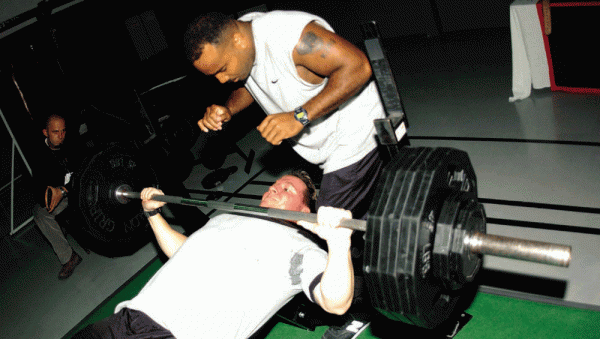
2.) Choose a reasonable weight! I've overdone it many, many times, and you probably will, too, as you learn what your body can handle. When I first started, I could only benchpress 75 lbs. That's the truth. The weight I would choose, when I'm starting off, is whatever weight I can -- with excellent form -- do about 8-12 repetitions of the exercise before my muscles are too fatigued to do another repetition. If I can do more than 12, the weight is too light, and if I can do fewer than 8 (or my form suffers), the weight is too heavy. Doing 3 or 4 sets of each exercise (the number of repetitions you can do should decrease by 1 or 2 from set-to-set) will give you a good workout.
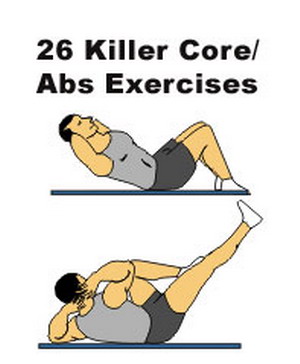
3.) Do two or three different exercises for each muscle group. Don't just do a benchpress if you're working your chest; do pushups or cable crosses or something else to exercise that muscle in a different way. If you're just starting out, I would start at the low end (2 exercises of 3 sets each = 6 sets total) for each muscle group. If you're going to work out 3x a week, you can do three different muscle groups each time you work out. Work your three muscle groups for the day in descending size order, from largest to smallest. (If you work your biceps before your pecs, you will find out the hard way that this is a recipe for pain!) This way, by the end of each week, you will have worked out all of your major muscle groups!

4.) Cool down and stretch! This is supremely important for maintaining flexibility and avoiding injury. You'll be tired at the end of your workout, but do it anyway. All of this takes about 90 minutes at a gym three times a week. You can always switch things up on yourself, but this was a great starting point for me that I wish I just knew when I was starting out, instead of learning slowly over the course of many years. And while you do this, make sure you stay hydrated! I typically burn through about two liters of water during a workout like this; discover what's right for your body, and err on the side of overhydration.
But that's just the exercise part. Is there more to it than that? Yes, but it isn't that hard. The two other components to get your body into shape, other than exercise?

Rest! That's right, after working your body this hard, it needs to recover. That means you need a good night's sleep, and it really helps with recovery -- especially when you're starting out -- to not lift weights two days in a row. The other major part of how to build muscle?
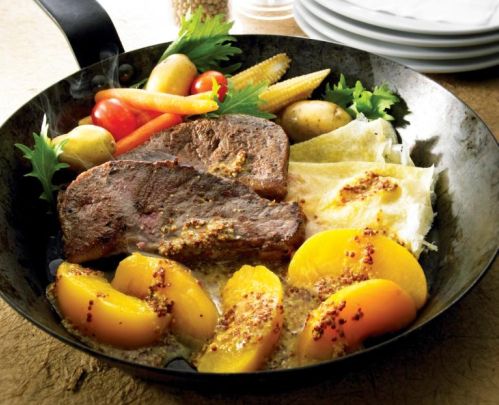
Eating appropriately. If you want to gain muscle, that means both more calories and the right kinds of calories. I like the website DailyBurn to track my diet and exercise, because they have a huge food database and show you the breakdown of where your calories come from. I'm not going to tell you what you can or cannot eat, but if your goal is to build muscle, you should be getting a lot more protein than the USRDA says. My general rule of thumb is that for every pound (kilogram) you weigh, you should be eating 0.8 grams per pound (1.75 grams per kilogram) of protein. So if you want to gain muscle and you weigh 175 pounds (79 kg), you should strive to eat about 140 grams of protein per day.
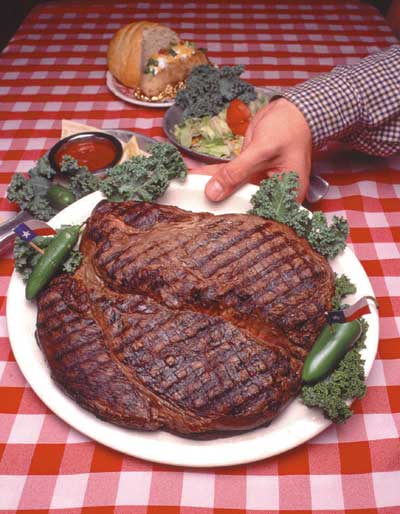
Not all at once; it should be spaced out fairly evenly (maybe 30 grams at a time) throughout the day (in four or more small/moderate meals). It's a fairly significant lifestyle overhaul for most people, but these were changes that I made that were relatively easy for me to make. Most of all, I'm really happy that I'm a lot more conscious of what I eat and drink overall, and that I feel good with what my body can do. And that part, feeling good with your body, is the greatest thing I've gained from being fit, and, however you choose to go about it, whether you choose to follow Abbie's or Isis' or Sci's or anyone else's (or your own) plan, I wish you the best in meeting your fitness goals.
The above? Those were the changes I -- mostly -- made to my life during my 20s. What I'm telling you isn't a scientific study, this is just my own personal experience and what I would recommend, based on my experience, to a novice who wanted to gain some muscle and didn't know where to start. Because it's very tempting to start with an ad like this (with compelling before-and-after photos):
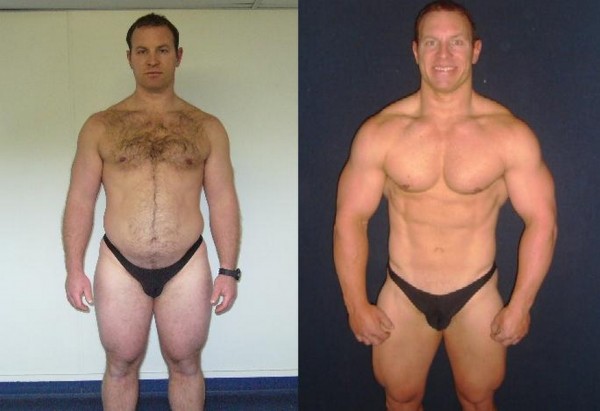
Don't. This before-and-after photo set? It's the difference between how bodybuilders look in the off-season and when they're ready for competition. How can you tell? Look at how strong the guy in the "before" picture is. Yes, he's got a fair bit of extra fat on him, but his thighs are huge and muscular, his arms are thick and strong, and his chest is significantly broader than his midsection.
Most of the "get ripped in 4 weeks" ads that you see do exactly this for before and after photos. Fitness isn't about that to me, it's about being healthy and strong throughout your daily life, regardless of where it takes you.
So what are your health and fitness goals? And what are you doing to meet them?
- Log in to post comments

I'm 23 years old, I just started going to the gym about 3 months ago, and I'm happy to see that I've been doing just about exactly what you are recommending. The place where I'm most behind is food...
By the way, if "bench press" is what I think it is, then starting at 75 pound is way way more than I'm able to. I started with the bar ALONE, which is 19 kg (about 40 pounds?), and now I've moved on to 24 kg (53 pound). I've felt no shame for it (though I admit, bench pressing a BAR looks rather silly), so I'm wondering if I should, as you were ashamed of TWICE of that...
My current plan, given by the gym instructors, involves doing an identical routine 3 times a week, which involves 2 different exercises for each muscle in the upper body (no lower body exercises at all)... The workout takes about 90 minutes, and I also do 30 minute run.
I wouldn't say this has had minimal effect on my lifestyle. It requires roughly a total of 3 hours each time, 3 times a week, and a long, sustainable willpower, for very gradual results... I'm currently an undergraduate student and I'm also working full time, so time is not easy to come by... This semester has been easy, my next semester should be quite harder, so I'll see how I'll deal with that...
The link to ERV (first paragraph) is broken - 'ERV' should be lowercase.
Well, that's all about building muscle - where does 'fitness' come in? What's the point of building muscle if you aren't going to use it in real life outside the gym?
You'd be better off (financially too!) in running to the gym, turning around at the door, and then running back home. Or walking fast... or cycling...
My leg muscles let me walk a 100km course in about 15 hours, yet they look to be about 1/2 the size of that bodybuilder. I'd call myself 'fit', and him just 'big'.
To look slick, you've got to be quite sick, or life is too short to be small.
Read Chinery S. In quest of size. L. and S. Research, Toms River, 1984
He tells what it takes to build good looking body.
Thanks for the statement about fitness goals. I think this gets overlooked a lot.
My goal (49yo female) is to be medically fit and physically able to easily do the activities I enjoy. I'm lazy but I target doing an hour of activity/day because otherwise I would spend that hour sitting and snacking. So in the (long and frigid) winter I go to exercise classes that mix up free weights, aerobics and yoga. The instructors ensure good form, variety and push participants to meet and excede their fatigue points. In the summer I walk to/from work and walk 18 holes of golf 3 to 4 times a week.
Like davem, I wonder about this emphasis on muscle building and how this equates to fitness. From an aging perspective, lack of bone/muscle pain and fatigue on a daily basis as well as flexibility and reasonable blood chemistry is more important than big muscles.
Building muscle isn't just a goal for looking big. Lifting weights has been shown to have many more benefits than packing on the pounds, and it's all in how you execute the exercise. Running is all well and good but it is more of a brute force method of getting in shape - forcing your body to burn more calories than you take in - whereas lifting weights can lead to more positive changes in body composition. Ideally, everybody should be doing a mix of both. I say this from personal experience, IF you do your research, lifting weights with proper form and not over-training can help dramatically with joint pain and flexibility.
Ethan's advice on how to go about working out will absolutely help with all those things. A cooldown period with stretching after a workout rather than before a workout is essential to preventing injuries, and a good workout should take no more than 90 minutes, otherwise you are doing too many exercises or waiting too long between them.
More specifically to Oded - when I started lifting weights I was 6'6" and a very skinny 180 pounds. YEARS later, I weigh 230 moderately healthy pounds. Starting out, I couldn't do much more than the bar either. Keep in mind that you have to be patient with yourself, progress will come slow and the BEST results you should expect are to add about 2 pounds of lean muscle mass per month with a diligent workout schedule. Try to mix up your workouts a bit more, doing the same exercises 3 times a week will lead to stagnation in your progress. Don't skimp on a healthy diet, as that will have more of an impact than you think. But most importantly, don't start doing something new until you have researched proper form and whether you should be doing it at all. The wisdom of gym jocks usually can't be trusted. Another helpful point - find a non-judgemental partner to work out with. It can make a huge difference in motivation and safety.
I hope I haven't gone on for too long with this, but I think this is an excellent topic that needs addressing and I'm glad ERV raised it for discussion.
Alright, does anyone have any tips for a poor grad student? I'm 23 and absurdly thin (120lbs and 6ft) and have kept losing weight during grad school because I'm in the lab all the time and not eating as much as I should.
What are some cheap protein options because cooking meat every day of the week is simply out of my budget.
To JTR: Various kinds of legumes are really good, cheap protein sources. I love garbanzo beans and lentils. If you can find some time to shop and cook, you can make big batches of certain dishes and freeze them in aliquots, so that you can have good, tasty, healthy food for quick lunches or dinners. Beef jerky is also a good thing to have in your desk drawer, along with crackers (carefully select those - most of them are unhealthy crap) and fresh fruit, for quick snacks.
Food intake is a vital part for health and fitness. After all, it's what rebuilds your tired muscles. I agree with other posters that a balanced exercise program with running/cycling/swimming as well as weight-bearing exercises will yield the best results.
Personally, my main goal is long-term health and maintaining my body so that it will serve me well for the rest of my life. Fortunately, a lot of the activities I enjoy count as exercise - running, cycling, climbing, soccer, hiking, skiing. I think having fun and finding something one enjoys doing really helps keep up an exercise routine.
Sol, thanks for the comments
Like I said, I feel no shame for my current progress. In fact, I'm rather amazed at how far I've gone, in that I've seen great improvement in my biceps and triceps, and in back muscles as I can see by being able much more pull-ups than I used to. I've seen little improvement in chest and stomach, but I'm not worried about it, and am certainly patient.
As for switching plans, I've switched once 2 months ago (the first plan was a very light one for the first month), and I had already planned to switch just tomorrow!
I hope I can at least trust my gym instructors for good exercises. I don't take advice from random people in the gym...
Healthy diet is hardest for me - I just had a meal of microwave popcorn due to laziness! I'm completely unused to cooking my own food, as I've lived for so long on "heat-it-yourself" meals... I try to eat healthier during the weekdays, where I buy food anyway. But at home I'm hopeless.
I'm signed to the gym for a year, and I promised to myself I'll at least live this year out as an experiment to see if it's even worth it. As I am already shocked by the results I've had so far (my endurance on the treadmill has gone up as well), it seems it has already proved itself worthy.
This is an important topic. I think the most important point when starting up a get-fit project is not to make it too complicated. Not that I don't think eating your protein in 30g/meal aquilots might not be better than goffing down your hamburger in one go, but is it effective enough to warrant the hassle? If you start a program that is not compatible with your usual life style, the probability of you continuing with it indefinitely is not very large.
If you want to loose weight, eat what you like, but put less of it on your plate. If you want to gain muscle, replace some of your cereal with protein, and train more heavy weights.
I manage to keep reasonably fit by walking to work, having a dog and training judo twice a week. Having passed some magic line, I now have to watch how much I eat. This is a level of activity and a diet that I can continue with pretty much forever.
I don't have any fitness goals, and I'm happy to stay that way.
On the other hand, eating in an environmentally responsible manner probably means cutting back on meat, especially beef, which is a big contributor to global warming.
12 reps to exhaustion is dangerously heavy for a novice weightlifter. Novices need to start with 20-25 reps to exhaustion in order to learn to balance the weight and, more importantly, to allow the small auxiliary stabilizing muscles time to get strong enough to guide the movements. Only after a month or two of 20-25 reps to exhaustion, should you start to gradually increase towards 10-12 reps to exhaustion.
Thanks for this well-presented, motivating and useful post for the New Year Ethan :). It was especially helpful to read your suggestion for protein consumption. DailyBurn is a great way to keep track of diet goals, develop awareness, and remain honest.
So sleep is ideal and a goal in itself. In the meantime, for those days where one is up from around 6:15AM-2:30AM (but not active from 10:00PM-2:30AM): 1. How would you recommend spacing out meals and 2. Are there better foods to eat at different times?
I would question the statement that newbies need rep ranges on the order of 20-25 reps. This is much higher than what is recommended for beginners by every fitness, strength, bodybuilding, powerlifting and olympic weightlifting coach I have ever read.
Obviously, one should not push a newbie excessively hard and the emphasis should always be on good form, but this can be done in the 5-12 rep range, with better strength and mass gains.
Good points, Cass (@5). My goals are long-term health, and therefor my workouts are a mix of aerobic, strength and flexibility exercises. There's solid evidence to support the long-term health benefits of aerobic exercise, and only minimal evidence relating to strength training.
A key aspect of any regimen is finding something you can stick with, and to me that means not doing every workout in a gym. A fitness program has to be something you can stick with over decades. So I mix it up: some gym work, some pool, some cycling, and once a week I play a team sport (hockey or soccer, depending on the season). Fitness has to be fun, or it eventually gets abandoned.
I also question Evan's diet advice. The RDA recommendation is 0.8 g/kg. Higher amounts may be damaging to the kidneys, particularly for people with hypertension or diabetes.
I am trying fit my self by doing exercise at home I am very excited about this one it is really a very nice.This is nice article related to fitness and health this is very nice post keep continue this kind of post.
mens sana in corpore sano
One very good reason for including strength training is loss of muscle mass as you age. Most of this loss is fast-twitch muscle fibers, the kind that you would normally use in heavy work [as in weight training, snow shoveling etc]. This muscle loss may be critical as you age for safety or accomplishing normal tasks. Another reason to do strength training is to stress the bones of the upper body to prevent osteoporosis. If you don't use it now and regularly, you may not have it when you really need it 30 years from now
For the weight training newbie:
The 20+ reps is probably a good idea for free weights. 12-15 reps is fine with weight machines where your range of motion is limited to one plane. Note that machines are almost always safer than free weights. You also get less use of accessory muscles [those smaller ones that help with the motion] with machines and get very little use the stabilizing muscles [those that maintain body position and form]. It may be best to start out with machines and graduate to using free weights for more and more exercises as you progress. To get the maximum benefit to the accessory and stabilizing muscles, some exercises shoud be done with dumbells.
JTR: eggs are another cheap source of very high quality protein. Weight training along with more good-quality calories will put a little more meatmuscle on you.
natural cynic:
The fundamental problem with 20+ reps, is getting the individual to properly maintain form during that massively long set. It is my experience that for ultra high rep schemes, that minds will start to wander and form will begin to break down. This breakdown of form increases the likelihood of injury and reinforces bad movement patterns, which can be very difficult to correct later.
It is much, much easier to get a newbie to concentrate properly and learn good form (the cornerstone to any successful experience lifting weights) with lower rep schemes. What is your opinion on this?
Mayo clinic recommends single set of 12. Please check out the following link
http://www.mayoclinic.com/health/weight-training/HQ01627
Does any one have a link to a paper that shows more than one set is more effective building muscles as opposed to what Mayo Clinic recommends ?
Alright, there are a lot of comments here to respond to. Please remember, I am not a professional at any of this, I'm just one person who's done this as an amateur for about a decade.
davem (@3), that picture of the man whose "fitness" you question is Joe Bonomo, one of the first famous "muscle men". Joe wrote about isometric exercises, body-weight resistance, and many simple fitness ideas that were decades ahead of his time. Joe Bonomo is perhaps one of the most famous people who doesn't have his own wikipedia page. (It's a different Joe Bonomo.)
cass (@5) and davem again, yes, fitness is also a lot more than just building muscle. I myself haven't even done any weight lifting in 8 months, as I've been focusing on other types of exercises, including many cardiovascular activities. Fitness is -- for me -- about your body feeling healthy and strong, and that you're physically able to use your body in all the ways you intend to without injuring yourself. Having significantly more muscle mass than I did ten years ago is definitely part of that for me.
JTR (@7), although eggs are a relatively cheap protein, they're also somewhat high-fat. One of my favorite protein options is a good quality protein powder. My favorite brand (and I get no kickbacks, unfortunately) is Optimum Nutrition's 100% whey protein powder. I can usually find a 10 lb. bag online (I like the chocolate flavor but not the vanilla or strawberry) for a little under $100, which will have something like 3000+ grams of protein in it. Things that add additional proteins to my diet are really the only diet supplements I've ever used.
Izzy (@8), I have started making my own jerky and it's wonderful! I love your snacking advice, but sometimes I have to be extra aware of the legumes, because many of them are also very high in fat.
Oded (@1 and 9), you know the expression, "you are what you eat?" In some sense, that's true. You will get results from working out much more quickly if you nourish your body properly. There are many effective ways to eat and be healthy, but you simply will not gain muscle if you do not eat enough protein.
Michael (@10), you bring up an excellent point: if you're setting fitness goals for yourself, they need to be compatible with you having a good life. What's the point of looking like Joe Bonomo up there if you're miserable every step of the way along the journey? Eating protein throughout the day was a pretty easy step for me; I don't really care if I only get 10 g at breakfast because I had fruit, milk and cereal, but it isn't hard to eat a sandwich with meat and cheese on it, a nutrition bar, leftovers from dinner the night before, or any number of things with 30 g of protein, easy, for lunch. It was a matter of being aware of how much protein was in my foods.
Physioprof (@12), you bring up the excellent point of needing to have good form! This is especially true of free-weight exercises. I never saw any results with exercises where I did more than 15 reps; when I wanted to improve my form, I typically went down about 25-35% in weight from what I could do 8-12 reps of, but I performed the exercise slowly, taking close to 10 seconds to do a single rep, and doing 8-12 reps of those. Slowing down forced me to focus on keeping my form solid, and I saw improvements quickly as well. Do you know what the thought is behind advocating so many reps?
Tamara (@13), there are lots of ways to eat healthy, and I can really only speak from experience where my own body is concerned. But -- when I'm being good -- I'll typically have breakfast (with a protein shake if I don't have time to cook eggs), something like a nutrition bar or a yogurt mid-morning, a solid lunch (almost always packed and prepared at home) with some sort of meat product (turkey sandwich, leftover chicken breast, etc.), dinner (which I'll usually cook myself), and either a late afternoon snack before I leave work or a second helping of dinner a couple of hours later. But that diet won't do you much good unless you incorporate some muscle-building activity in there.
David (@15), obviously if you have other health concerns you shouldn't just follow what I've written. If you have kidney problems, high amounts of protein do have the potential to be damaging, and I have heard of cases of long-term damage in extreme situations, but I don't know what the scientific studies that have been done show. However, the US recommended daily allowances for protein is quite low for an active person and their carbohydrate recommendations are, IMO, quite high. Compare the USRDA to the UKRDA for active people and you might be shocked at the differences; the UK recommends more than twice as much protein as the US!
too_many_reps (@19), I've never seen results in my own body doing fewer than 3 sets, and I've seen better results when I do 6 or 8 sets than 3 or 4, but I also don't doubt the Mayo clinic. My guess -- after reading it -- is that the article was written for people who currently do zero sets of 12 reps, and informs them that the difference in results that you'll see between doing zero sets and one set is much bigger than the difference between doing one set and three sets, and I don't doubt that at all.
Great discussion! I'm 63 y/o and was diagnosed with prostate cancer with multiple bone metastases 3 yrs ago. I was started on a clinical trial of androgen blockade basically shutting down androgen production and blocking receptors on tumor cells. Among the adverse effects are muscle loss and weight gain [a great combination]. I'd always been active playing squash/racquetball, volleyball, & softball 5+ times/week, but I found the therapy resulted in upper body weakness and a 20# weight gain.
2-1/2 yrs ago I found a great trainer, Noah, and started working out with him 2x week [1 hr each time] with cardio training on my own another 3-4x week. Noah focuses on whole body work and rarely uses machines. In fact, I could probably do most of it at home, but enjoy working in a gym. Most of the exercises are paired doing 3 sets of 10-12 reps each - sometimes timed rather than a specific number of reps. In over two years of work, Noah always comes up with something new every workout. He also stresses balance [love that bosu!] and flexibility/stretching - especially for someone over 60.
It's been a great experience for me - and something I encourage other cancer patients to try. Just because I'm being treated for cancer doesn't mean I can't be active - I'm still playing competitive power volleyball and can bicycle 100+ miles/day. I also took tai chi classes to help my balance, but rarely do the 108-movement long form.
Bottom line for me is that exercise with Noah has helped me to live an active life regardless of my cancer diagnosis. I do anything I want and am never sore the next day [although trying to get to curl 100# - my own fault, not Noah's - resulted in an elbow strain that's taken awhile to heal]. And yes, my cancer's had a great response, too!
Fitness should be a long time, slowly, not soon be strongã
From what I've been told, higher reps (18+) builds strength but not size. Lower reps with heavier weight builds strength, power and mass. If you are a long distance runner and you want to get better upper body strength without getting bigger, then this could be the approach for you.
The main idea is to come up with a goal of what you want that matches your personality. As someone else stated, do what you enjoy doing so you'll keep doing it. I did weight training since it was hot outside and it was convenient to where I worked. It gave me something positive to do when I was trying to get over a soured relationship. I would always feel better after a workout because at least I did one good thing for myself that day.
I've done plenty of weight training so I'm big enough and don't need to become bigger. What I want now is more core strength so I can do the manual labor around the ranch (clearing brush, digging, etc...) and keep fit as I get older. The workout is core intensive along with various balance and weight exercises mixed in. This can be very aerobic if you do it right. I also like running 5k races so I to interval training or a 3 mile run once a week.
Bottom line, figure out what you want. Then figure out some goals to help you get to the place you want to be. If you don't know what to do, get some expert advice on how to get where you want to go.
I'm glad to see all the comments, this is an interesting discussion. I would like to comment on the nutrition again. Fat is not necessarily bad. It is true that some legumes have fat, it's mostly of the unsaturated variety. A decent amount of fat is needed for a balanced diet, and important for brain function. The saturated fats in processed food are contributors to weight (fat) gain, whereas there's studies suggesting that the unsaturated variety in vegetables and legumes is not. Avocados are very high in fat, but very good for you. Eggs are also high in fat and cholesterol, but don't really contribute to high serum cholesterol if you eat two or so a day. In the end, it all comes down to moderation.
20-25 reps!? 90 minutes in the gym!? Weightlifting is only good for looking big!? There are a lot of misconceptions about weight-bearing exercise out there! Ethan you have a row to hoe in front of you.
If people want real weightlifting advice I strongly suggest you all look to the people who do that shit for a living, i.e. bodybuilders and powerlifters. There are a few good magazines out there that give such advice (Muscle and Fitness, Muscular Development, etc.) but you have to ignore all the supplement bullshit and there is A LOT of that! This link gives a good example of a beginning weight training routine(it also provides a fine example of the nonsensical ads for supplements with which you will be assaulted)
http://www.muscleandfitness.com/complete_mf_beginner_training_guide/tra…
As for diet, all you really need to do is eat right and maybe use a protein supplement (as Ethan suggested) like a whey powder. It's cheaper per serving compared to other sources, not high in fat, and convenient to take to work. There's not much good research on a lot of the 'cutting edge' supplements out there and you all probably know that they aren't regulated like legit pharmaceuticals so you're not even guaranteed to get what is listed in the ingredients.
I'll echo Pete D:
Re: CPP@12
20+ reps TO FAILURE for a BEGINNER? That's lunacy.
The idea that a beginner should be intentionally going to failure (at any number of reps) strikes me as crazy. But I'd be glad to be corrected by a knowledgeable person: is there any study showing that - for a NOVICE trainee - going to failure is advantageous for hypertrophy/strength gains/whatever it is you're looking for?
I agree with Ethan's general advice (and his single-digit number of reps per set) but I think he's overdoing it with the multiple exercises for each muscle group (essential for bodybuilders, but probably overkill for the vast majority of trainees). I tend to prefer a few large compound movements over a lot of isolation exercises. For a beginner interested in strength training, I'd recommend Mark Rippetoe's Starting Strength book.
Anonymous Coward - here's a good review of rep range for beginners and advance weightlifters... http://findarticles.com/p/articles/mi_m0KFY/is_4_23/ai_n13790127/?tag=c…
Multiple exercises are important for large muscle groups because different exercises can shift the load to different sets of muscle fibers. E.g. incline bench vs. flat bench. If you look at the origin/insertion of the muscle fibers in the pectorals you can see how each movement places more of the load on the muscle fibers that run at different angles. Here's a post with references http://www.texaspowerscene.com/articles/bodybuilding/benchpress.html although I'm usually skeptical of a lot of these type of studies due to small sample size and lack of controls.
I'll check out Rippetoe's book.
AC - HA! Rippetoe! Awesome...
Re: Pete D @ 27
Thanks for the reference on reps. I always like looking at data, and since I recently started lifting weights again this is especially interesting to me.
Summary of my take on the article: I have no problem with the recommendation of 12 reps/set for beginners and 8 for trained individuals but the data presented is not at all conclusive or even convincing.
Full version: Through my institution I was able to pull up the original reference the "Flex" article was based on (MEDICINE & SCIENCE IN SPORTS & EXERCISE, 35 p 456 (2003) http://journals.lww.com/acsm-msse/toc/2003/03000). It's a meta-analysis of data from other papers.
In the original article I couldn't find any mention of repetitions - only of training intensity as a percentage of 1 RM. (How they accurately gauged the rapidly changing 1RM of an untrained individual from week to week is beyond me.) Reading through the abstract's summary of the data, the Flex article's translation of the article's conclusions into reps seems very reasonable.
However, when venturing past the abstract:
The curve showing effect size doesn't inspire confidence. For untrained individuals, they have data covering a range from 40% to 90% 1RM, with local maxima at 40, 60, and 78%; local minima can be found at 50, 70, and 90%. From their Figure 1, I'd conclude that working out at either 60% 1RM or 78% 1RM would be roughly twice as efficacious as at 70%. I'll admit that biology is tricky stuff, but that seems pretty crazy to me.
These crazy fluctuations are not so surprising when one notices that the standard deviations on the different data points (which are omitted from the overly smoothed Fig 1) exceed any differences between any points EXCEPT the 90% load. Consequently, from the data presented in the paper I can't see how one could conclude ANYTHING about the different protocols other than 90% 1RM is inferior to lower loads for untrained individuals.
I dunno: maybe someone else with access to the original article and less of a hang-up about error bars can explain to me why I'm wrong and why the conclusions presented in their abstract should have made it past peer review.
Yeah AC, accounting for SD it looks like you could just as well draw a straight line in Fig 1! Their more recent papers aren't any better. I guess I should take more time to look at this stuff before I post it instead of trying to find something while my kids are in the bathtub! Unfortunately, this is representative of the kind of research that is common in the published literature on strength training. It would be nice to see large, high-quality studies done on this considering the number of people who undertake some form of strength training.
Still, I look at the type of training that powerlifters and bodybuilders do from beginners to more advanced trainees and the common theme seems to be multiple sets of 10 - 15 reps per muscle group for beginners and increasing volume (to a point) as you get stronger. I currently do 10 - 12 sets for large muscle groups (chest, back, shoulders, upper legs) and 6 - 9 for smaller groups (bis, tris, calves) using a 4-day split. All with varying numbers of reps and varying intensities (as % of 1RM). I have found that this gives me the best results as far as building and maintaining strength and mass while avoiding nagging injuries. Generally I can get in and out of the gym in less than 1 hr. But I've been training for 20 yrs now and have found what works and doesn't work for me by trying different routines, cycles, splits, exercises, etc. I guess the main point is for people to do something other than sit on their asses!
Re: Pete D @30
> It would be nice to see large, high-quality studies done on this considering the number of people who undertake some form of strength training.
Agreed. As a scientist, it's frustrating to me that there aren't. Especially when you consider that the U.S. health-club industry has revenues of 10's of billions of dollars a year.
But biology is pretty darn hard, and there's probably no universal "optimal" training regimen - what would be optimal for you and your biology might be different that what would work best for me.
> I guess the main point is for people to do something other than sit on their asses!
Agreed. Your program certainly sounds like a good one to me.
soccer fitness training is very essential for any soccer player even if he is blessed with the ultimate talent.
Wow, really long freaking article. You should read up on weightlifting shoes and how they help training. I bought a pair of ristos from http://www.musclesandcurves.com and they helped my squat and deadlift tremendously.
Yeah...I found that weightlifting shoes are very good and can actually increase your weight lifting effectivness by almost 100%. I bought mine from http://www.masterlevelfitness.com. They were do-win MuscleDriver weightlifting shoes and I am very pleased with them so far.
These steps really don't seem that hard but I guess the important part is to continue doing these. Some people usually start a fitness regimen then give up on them after a few days or weeks. Also, a good healthy diet really helps.
I don't care how fit you are, there's no excuse for wearing speedo's!mortgage refinance
there are SOOO many pills that are not approved by FDA but u want one that speeds up my metabolism, without all the bad side effects. I lift 5 days a week and mild cardio in the winter, but it would help to shed winter pounds for spring!!!
ME CAGO!â¥